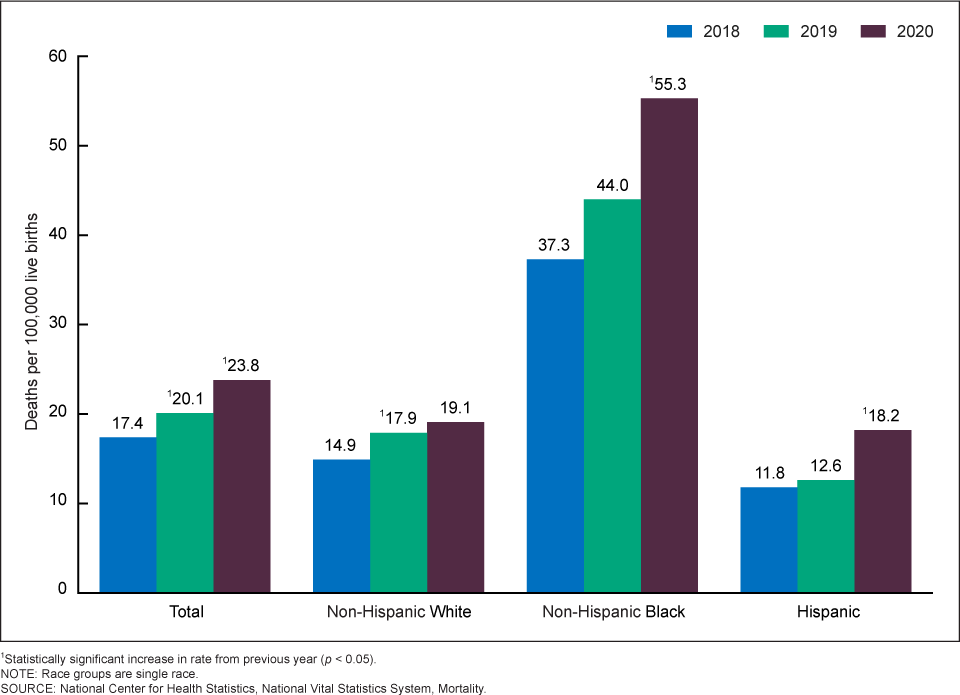Understanding the Alarming US Maternal Death Rate

Introduction
In recent years, the United States has been grappling with a concerning issue – its maternal death rate. While advances in healthcare have significantly improved maternal mortality rates worldwide, the U.S. seems to be an outlier. This article delves into the complex web of factors contributing to the high maternal death rate in the United States and seeks to shed light on the underlying causes.
The Disturbing Numbers
The Shocking Statistics
To comprehend the gravity of the situation, let’s first look at some alarming statistics. In the U.S., the maternal death rate stands at 17.4 deaths per 100,000 live births, according to the Centers for Disease Control and Prevention (CDC). This figure is significantly higher than in most other developed countries. But what’s causing this stark contrast?
The Factors at Play
Healthcare Disparities
One of the primary factors contributing to the high maternal death rate in the U.S. is healthcare disparities. The quality of healthcare services and access to prenatal and postnatal care varies greatly across different demographic groups. Socioeconomic status, race, and geographical location play pivotal roles in determining a woman’s access to quality healthcare during pregnancy and childbirth.
Obesity Epidemic
The obesity epidemic in the United States also plays a substantial role. Obesity increases the risk of complications during pregnancy, such as gestational diabetes, hypertension, and preeclampsia. These conditions can escalate into life-threatening situations if not managed effectively.
Lack of Comprehensive Sex Education
Inadequate sex education is another contributing factor. Many young adults in the U.S. do not receive comprehensive sexual education in schools. This can lead to unintended pregnancies and a lack of awareness about prenatal care, potentially putting both the mother and the baby at risk.
Delayed Parenthood
Delaying parenthood is becoming increasingly common in the U.S. Women are waiting until later in life to have children, which can lead to higher-risk pregnancies. Advanced maternal age is associated with a greater likelihood of complications during childbirth.
The Role of Healthcare Systems
Fragmented Healthcare
The fragmented nature of the U.S. healthcare system also contributes to the maternal death rate. Unlike countries with universal healthcare, where every citizen has access to standardized care, the U.S. relies on a mix of private and public systems, leading to disparities in care quality and access.
Lack of Standardized Protocols
Additionally, the lack of standardized protocols for maternal care can lead to inconsistencies in treatment and diagnosis. Improved guidelines and standardized practices could go a long way in reducing maternal mortality.
Raising Awareness and Advocacy
The Need for Advocacy
Addressing the U.S. maternal death rate crisis requires a multi-faceted approach. Advocacy for policy changes, increased funding for maternal healthcare, and greater awareness about the issue are crucial steps.
Community Initiatives
Communities can also play a pivotal role in supporting expectant mothers. Community-driven initiatives, support groups, and educational programs can provide valuable resources and encouragement.
Conclusion
In conclusion, the high maternal death rate in the United States is a complex issue with multiple contributing factors. Addressing this crisis requires a concerted effort from healthcare providers, policymakers, communities, and individuals. By tackling healthcare disparities, promoting education, and advocating for change, we can work towards a future where maternal mortality rates in the U.S. are significantly lower.
FAQs
- Why is the maternal death rate higher in the United States compared to other developed countries? The high maternal death rate in the U.S. is influenced by factors such as healthcare disparities, the obesity epidemic, delayed parenthood, and a fragmented healthcare system.
- How can healthcare disparities be reduced to improve maternal outcomes? Reducing healthcare disparities involves addressing issues related to access, affordability, and quality of healthcare services, particularly for marginalized communities.
- What role does obesity play in maternal mortality? Obesity increases the risk of complications during pregnancy, which can lead to maternal mortality if not managed properly.
- How can comprehensive sex education contribute to lowering the maternal death rate? Comprehensive sex education can empower individuals with knowledge about reproductive health and prenatal care, reducing the risk of complications during pregnancy.
- What can individuals do to help reduce the maternal death rate in the U.S.? Individuals can support advocacy efforts, stay informed about maternal health, and seek timely prenatal care to contribute to lowering the maternal death rate.
